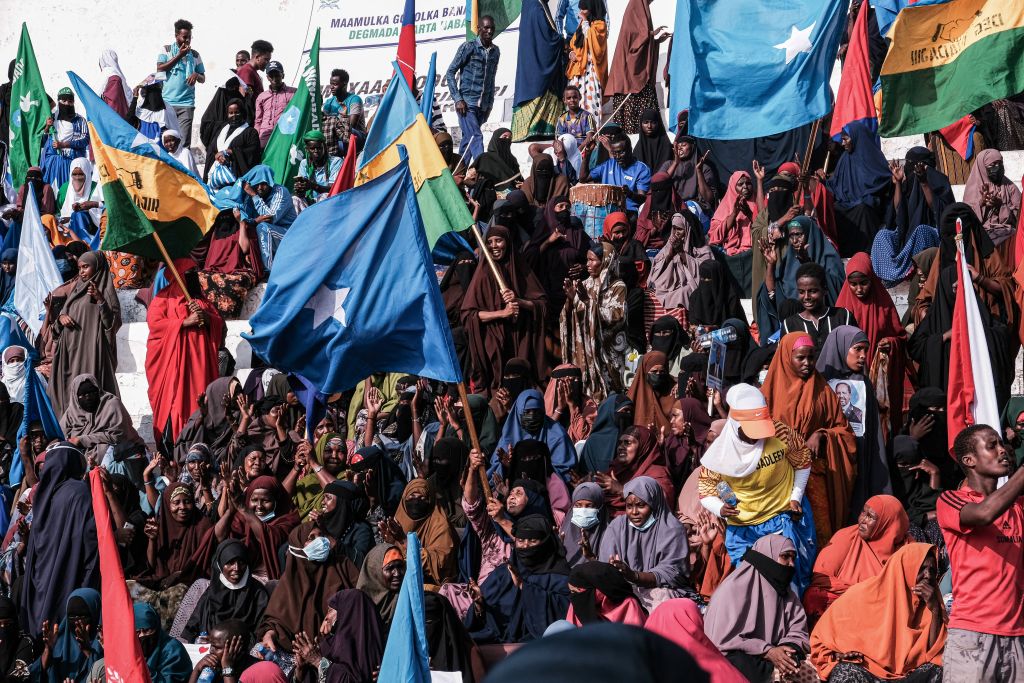Somali security forces in 2022 reclaimed the town of Adan Yabaal, a logistical hub for the government forces, from the al-Shabaab terror group.
However, on April 16, 2025, al-Shabaab reclaimed the town, which is about 220 kilometers north of Mogadishu, the national capital. The predawn raid forced government forces to retreat from the town, which connects Hirshabelle State to neighboring Galmudug State.
“After early morning prayers, we heard a deafening explosion, then gunfire,” Fatuma Nur, a mother of four, told Reuters. “Al-Shabab attacked us from two directions.”
The loss of Adan Yabaal underscores the Somali government’s difficulty in stabilizing communities it recovers. This has resulted in a “shifting patchwork of territories controlled by the government,” according to Ronnie Bradford, an analyst with Gist Research, an advisory company that focuses on conflict, governance and peace-building issues.
“While resource constraints are always a consideration and continue to be significant, the lack of pre- and post-operation coordination between military and civilian authorities is perhaps a more important constraining factor for stabilization efforts in Somalia — and countering al Shabaab at the strategic level,” Bradford, a retired colonel in the British Army,wrote for the Africa Center for Strategic Studies.
Security forces in South West State have made significant gains, yet al-Shabaab directly or indirectly controls most of it. The terror group is particularly influential in rural areas and along roads leading to and from Mogadishu. Failing to stabilize recovered communities slows military progress against al-Shabaab and hinders service provision, commerce, investment, job creation and the return of internally displaced people, Bradford wrote.
Coordinating stabilization efforts in the state is complicated. An array of local security forces operates there, including Somali National Army brigades, Somali National Police units, National Intelligence and Security Agency forces, and the state’s Special Police Force. The African Union Support and Stabilization Mission in Somalia (AUSSOM) and the Ethiopian National Defense Force also are deployed there.
Additionally, Somalia’s stabilization strategy is covered by a litany of national and state policies that involve numerous ministries and agencies. According to Bradford, there is limited understanding of the roles and responsibilities among military and civilian actors, and meetings on stabilization coordination are infrequent.
“Even if staff at the working level meet weekly, they would likely have little authority or capability to share information and take decisions,” Bradford wrote.
Because there is no comprehensive whole-of-government framework linking policies to achievable goals and available resources, few stakeholders know what might be possible to advance stabilization operations. Bradford offered several recommendations to improve Somalia’s stabilization processes, including:
* Promoting doctrine that identifies all the military tasks in stabilization.
* Building trust and understanding among all stabilization actors.
* Increasing the frequency of state stabilization coordination meetings from quarterly to monthly.
* Developing comprehensive whole-of-government stabilization plans.
Bradford also noted a need to increase the speed and adaptability of civilian actors in stabilization efforts, including identifying the personnel and resources needed to establish a functioning government that can provide basic services.
As Somali authorities grapple with ways to stabilize areas it controls, al-Shabaab since January has maintained an offensive northeast of Mogadishu and across central Somalia.
On the same day that al-Shabaab regained Adan Yabaal, the group also seized the village of Aboorey after two weeks of heavy fighting. Local sources said government forces lacked adequate air support. Somali news website Garowe Online reported that both sides reported significant casualties, while al-Shabaab claimed it killed several members of the Ma’awisley militia and seized military vehicles.
“Aboorey is vital for Al-Shabaab’s movement between Hiiraan, Middle Shabelle, and Galmudug,” a regional security analyst told Somali news website Caasimada Online. “Losing it creates serious logistical challenges for the Somali forces.”
The attacks on Aboorey and Adan Yabaal occurred as AUSSOM gradually takes over from the now-defunct African Union Transition Mission in Somalia, or ATMIS, amid questions about funding and troop strength.
“The Somali government and its allies must urgently recalibrate their approach,” a senior diplomat in Mogadishu told Caasimada Online. “These losses are a wake-up call.”

